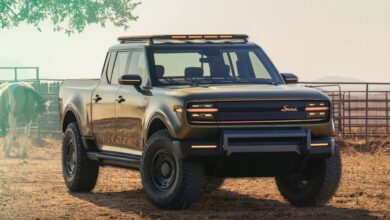This Early Hyundai Ioniq 9 Charge Test Looks Really Good

EVs on the Hyundai Motor Group’s E-GMP platform tend to be charging monsters. The Hyundai Ioniq 5 can knock out a 10-80% fast-charging session in about 20 minutes, which is quicker than most high-end luxury cars can manage. The Kia EV6 and EV9 are equally impressive. But now that the all-new three-row Hyundai Ioniq 9 is hitting the streets, so how does it stack up?
On first blush, the results look good. In a test by The Ioniq Guy, the Ioniq 9 charged from 10-80% in under 24 minutes, which is right in line with Hyundai’s claimed charging speed. That included a peak charging rate of 243 kilowatts, which is pretty impressive.
But you won’t see those numbers everywhere. The Ioniq 9 is the first all-new Hyundai product to come from the factory with a Tesla-style North American Charging System (NACS) port. That gives it native access to Tesla Superchargers, but with one big caveat: The Ioniq 9 will take far longer to charge on a Tesla charger.
This is the result of Hyundai’s greatest charging advantage, its 800-volt architecture. Cranking the voltage allows you handle more wattage (i.e. power) with less current and heat, making 800- or 1,000-volt cars like the Ioniq 5, Ioniq 9, Lucid Gravity and Porsche Taycan charging champs. Yet most EVs use lower-voltage platforms, with primarily 400-volt components that are more commonplace and cheaper. That’s what the Tesla Model 3, Model S, Model X and Model Y use, which is why it’s also what Tesla Superchargers use.

49
Source: Tim Levin/InsideEVs
When you try to charge an 800-volt system with a 400-volt chargers, things get complicated. (Note that we talk about voltages by class, but nominal voltages are precise figures. So while a Tesla charger is considered to be in the 400-volt class, it operates at 480 volts. Similarly, while the Ioniq 9’s platform is an 800-volt-class system, it operates at around 610 volts.)
For the car to accept the power from the charger, it needs to step up the voltage using internal DC-to-DC converters, which are lossy and not always powerful enough to max out your charging speed.
The end result: Slower charge times on Superchargers, as Tim Levin explains here.
The Ioniq Guy’s test was carried out on a 350-kilowatt Electrify America station, which natively supports 800-volt systems. That’s the best-case scenario. It’s also what will be available once 1,000-volt Tesla Superchargers and native NACS dispensers come online, which should happen soon. But in the meantime, Ioniq 9 owners will see slower charge times on Superchargers. How much slower? For that, you’ll need to wait for the official InsideEVs charge test, coming soon.
Contact the author: Mack.Hogan@insideevs.com
Source link

